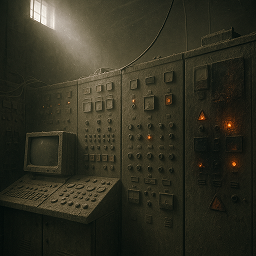News
Dust: The Invisible Threat Inside Every Electrical System
When we think of electrical failures, we
picture burnt wires, tripped breakers, or overloaded circuits.
But often, the root cause is far more subtleвҖ”and far more preventable.
ItвҖҷs dust.
вқ“ Why Dust Is So
DangerousвҖ”Yet Often Ignored
Dust seems harmless. It floats, settles,
and blends quietly into the background.
But in electrical and electronic systems, dust is anything but benign.
HereвҖҷs what makes it so dangerous:
- Conductive Composition: Industrial dust often contains carbon,
metallic particles, or oil residueвҖ”materials that can conduct electricity.
- Moisture Absorption: Dust absorbs humidity from the air,
increasing surface conductivity and creating unintended current paths.
- Heat Insulation: Even a thin layer of dust traps heat, which
interferes with cooling and accelerates thermal degradation of components.
- Corona Discharge Trigger: In high-voltage systems, dust builds
around insulators and connectors, enabling partial discharge a slow,
silent breakdown of insulation.
These arenвҖҷt theoretical risks. They're
responsible for real-world problems:
- Arc flashes
- Insulation breakdown
- Fire hazards
- Equipment failure
- System-wide outages
Why It's So Often Overlooked
Dust is:
- Tiny вҖ“ barely visible until itвҖҷs too late
- Gradual вҖ“ builds slowly over weeks or months
- Ubiquitous вҖ“ enters through vents, doors, and even during
installation
- Tolerated вҖ“ until it causes visible damage
This combination makes dust a вҖңlow-urgency,
high-impactвҖқ threatвҖ”the kind thatвҖҷs easy to ignore but expensive to fix.
The Cost of Ignoring It
Uncontrolled dust accumulation:
- Decreases system efficiency
- Increases the risk of unplanned shutdowns
- Shortens the lifespan of sensitive electronics
- Requires more frequent (and expensive) component replacements
And because most facilities avoid powering
down, cleaning is often postponedвҖ”or skipped entirely.
ThatвҖҷs where preventive, live-system-compatible cleaning becomes essential.
The Takeaway: DonвҖҷt Wait for the Dust to
Speak Loudly
Dust doesnвҖҷt trigger alarms. It doesnвҖҷt
buzz or beep.
But it steadily degrades performance in the backgroundвҖ”until your system fails
and youвҖҷre left asking, вҖңWhat happened?вҖқ
The smart move is to treat dust as a predictable
enemy, not a surprise one.
Regular, safe cleaningвҖ”especially with non-conductive, nano-level tools like NWKвҖ‘99
OPPвҖ”can keep systems running cleaner, cooler, and longer.
Next Steps:
- Audit your panels and enclosures visually.
- Identify hotspots prone to dust or moisture.
- Integrate dry-cleaning protocols that donвҖҷt require shutdowns.
Because what you donвҖҷt seeвҖҰ is already
working against you.
Visit to see how live demos are done here: www.youtube.com/@naewoikorea


 2025.07.09.jpeg (141.3 KB)
2025.07.09.jpeg (141.3 KB)
